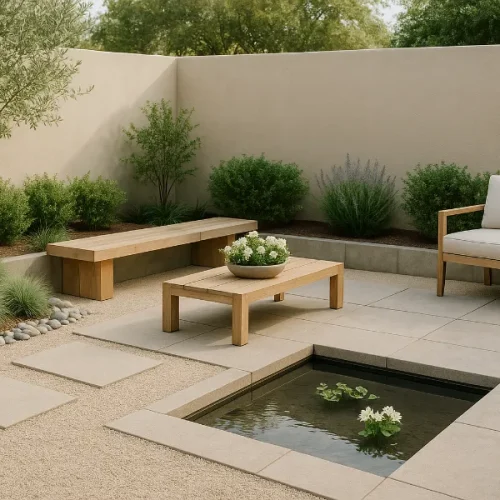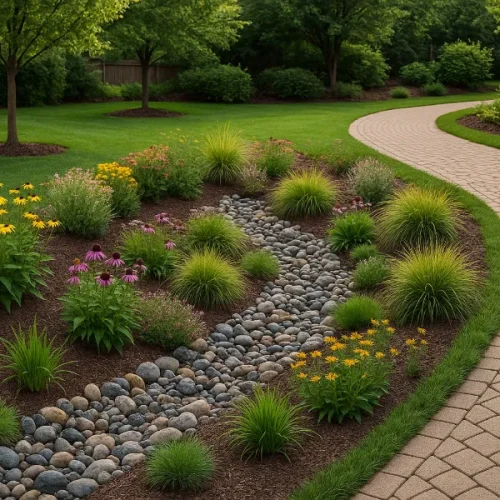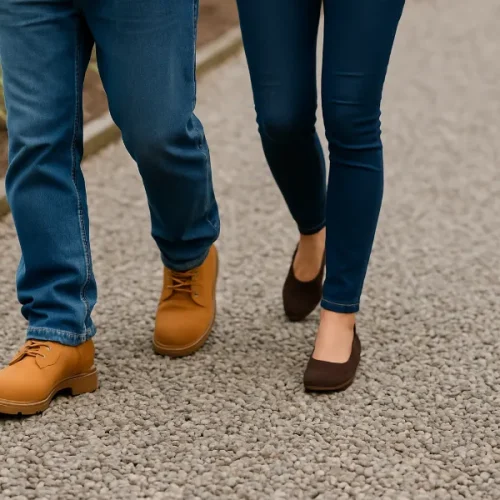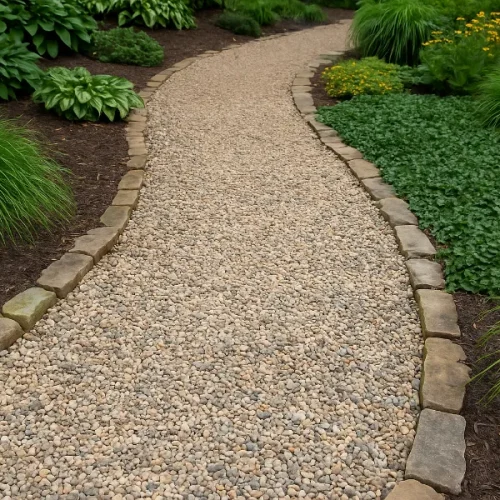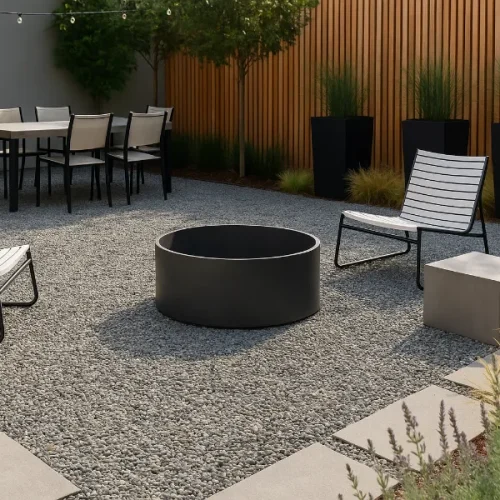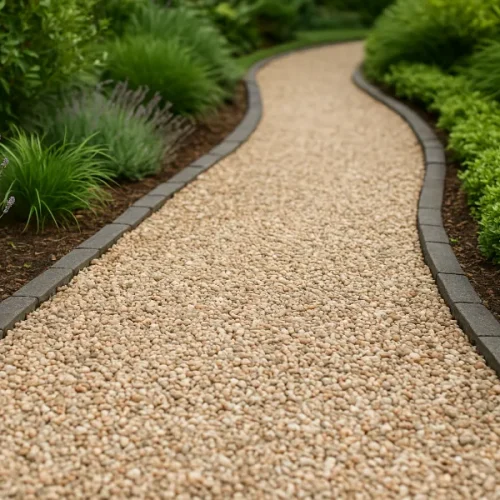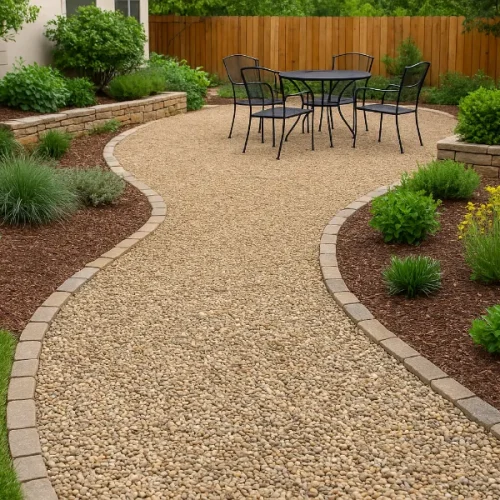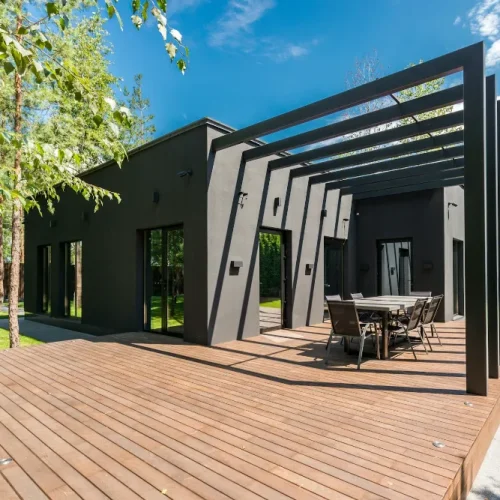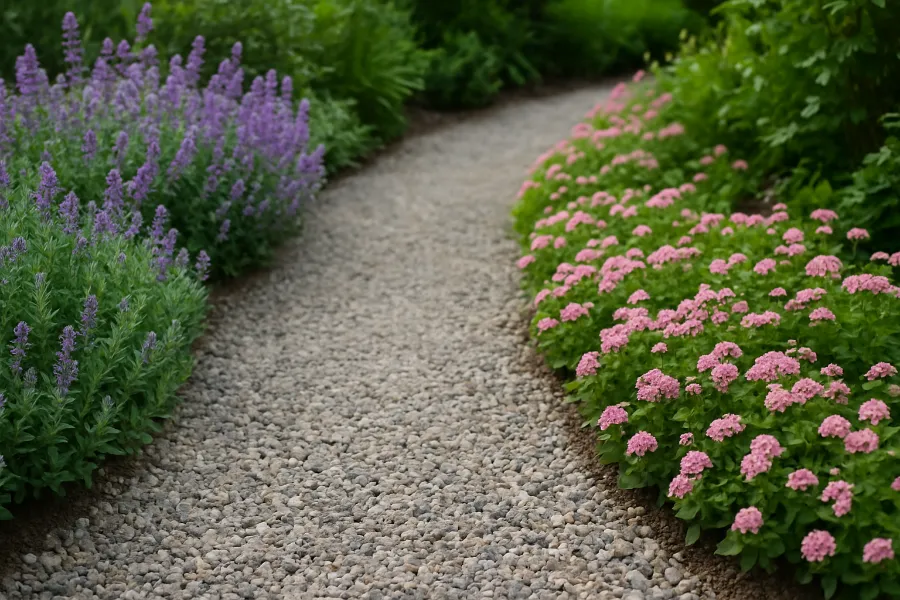
Gravel is one of those humble materials that quietly does a lot of work in a landscape. It softens hard lines, allows water to drain naturally, comes in a range of colors, and blends with nearly any style—from wild cottage gardens to clean-lined modern courtyards. But when gravel meets grass, concrete, flower beds, or pathways, you need something that creates order. That’s where edging comes in. Gravel edging ideas are all about giving structure to loose materials without making your space feel rigid or overly formal.
Good edging acts like punctuation in a garden sentence. It keeps things tidy, helps guide the eye, and prevents gravel from migrating where it shouldn’t—like into lawn areas or between stepping stones. Whether you’re planning a new gravel walkway, a decorative planted border, a patio, or a long driveway, the edging you choose will influence not only the look but also how easy your space is to maintain. Outdoor landscapes that use gravel often overlap with other elements like low-maintenance garden walkway ideas, gravel patios, or garden seating zones. The edging chosen becomes the subtle detail that ties all of these features together.
Why Gravel Edging Matters
Before exploring material options, it helps to understand the role of edging in a gravel project.
Gravel, by nature, is mobile. Foot traffic, rain, wind, and garden tools can cause it to shift. The right edging:
- Defines clear boundaries
- Prevents gravel washout
- Reduces weeding and trimming work
- Elevates visual structure
Even the most natural-looking landscapes benefit from subtle visual anchors. This becomes especially important in landscape design for small outdoor spaces, where every transition needs intention to avoid clutter.
Gravel Edging Styles: Subtle vs. Bold
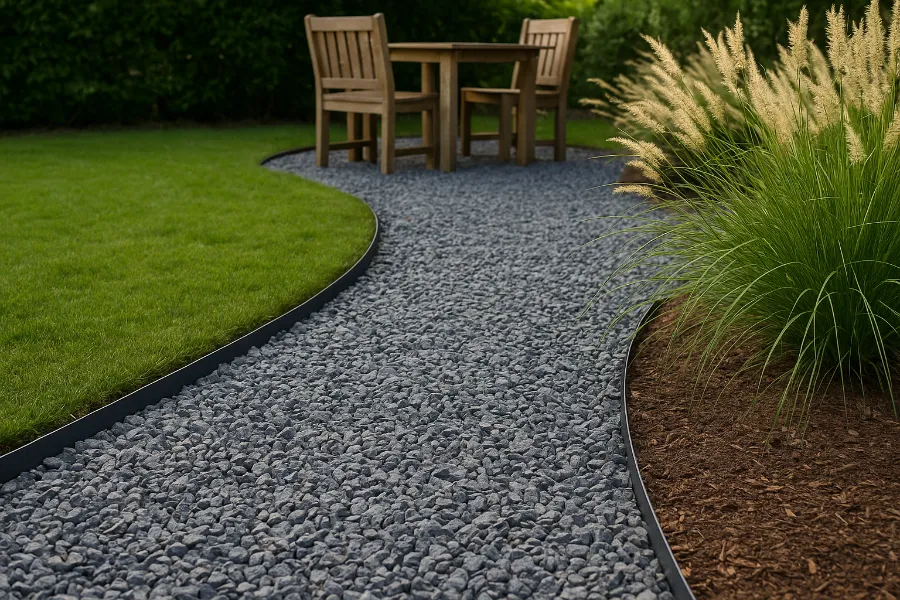
Subtle edging works well in relaxed, informal landscapes such as gardens with best plants to soften hard garden edges, where plant texture does some of the dividing.
Bold edging commonly appears in modern backyard landscaping with steel borders, where crisp lines define the overall geometry of the space.
Material Options for Gravel Edging
1. Steel Edging
Steel edging is sleek, slim, and modern. It supports structured pathways and rustic outdoor seating area design where the contrast between natural ground and metal trim is intentional.
2. Aluminum Edging
Aluminum edging performs similar functions with lightweight construction and rust resistance.
3. Natural Stone Edging
Stone edging pairs beautifully with how to create a natural stone garden border, giving timeless and grounded character.
4. Brick Edging
Brick edging works well in both classic garden entries and relaxed landscaping.
5. Wood Edging
Wood edging complements garden beds, woodland paths, and informal outdoor layouts.
6. Plastic or Composite Edging
Plastic edging is practical where budget and flexibility matter more than visual emphasis.
7. Living Plant Edging
Low-growing greenery forms cottage garden path with flowering groundcovers that create living transitions along gravel.
Gravel Edging for Different Outdoor Spaces
Walkways
Metal or brick provides crisp walkway definition.
Plant borders make pathways feel soft and welcoming.
Patios
Gravel patios benefit from edging that defines usable zones, especially when selecting weather-resistant materials for garden borders.
Driveways
Durable edging is required for driveway landscaping with decorative stone, where vehicle pressure can shift gravel.
Color and Texture Considerations
Gravel color influences mood:
- Light gravel = airy, relaxed
- Dark gravel = structured, modern
Contrast and harmony are both valid design choices.
Installation Basics
- Mark and shape the border.
- Dig and level the trench.
- Install and secure edging.
- Lay landscape fabric if needed.
- Pour and rake gravel to depth.
For drainage considerations, The U.S. EPA Stormwater Management Guidelines provide useful clarity on how gravel surfaces can assist with infiltration and runoff control:
Low-Maintenance Tips
Regular raking keeps gravel level.
Refreshing the top layer every few years maintains depth and color.
Plant edging should be trimmed periodically.
This is especially key in drainage solutions for gravel patios, where surface water should move evenly.
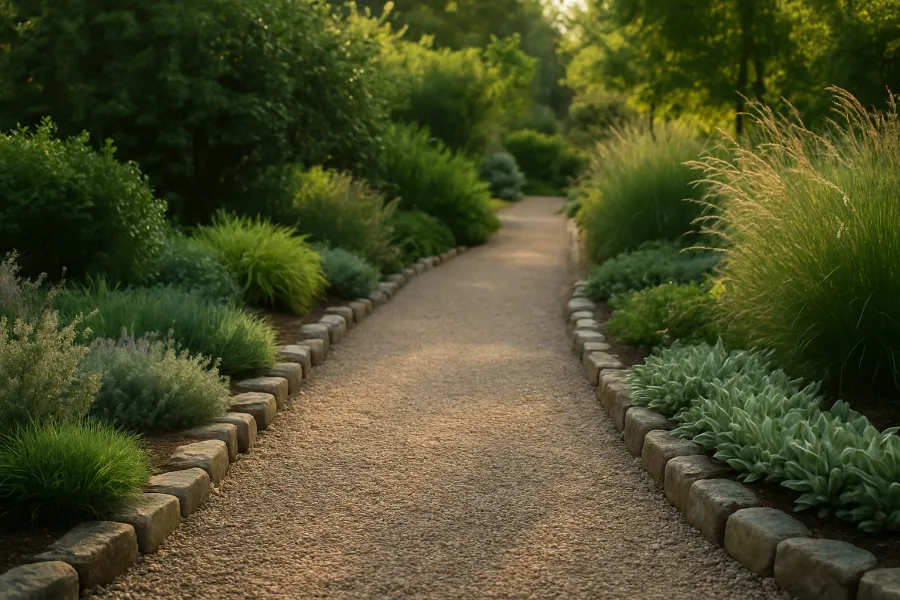
Bringing It All Together
Gravel edging is less about strict rules and more about choosing details that support the landscape’s personality. Crisp steel creates precision. Stone adds grounding and permanence. Wood brings warmth. Plants offer softness and seasonal life. Gravel becomes the canvas; edging becomes the frame that defines the composition.
Your space does not need elaborate design to feel intentional. A clear border, thoughtful material choice, and natural transitions can make the entire landscape feel calm, cohesive, and inviting.
FAQs
Gravel edging helps keep gravel contained, prevents spreading, and creates a clean boundary in outdoor spaces.
Steel, aluminum, brick, natural stone, wood, composite edging, and even low-growing plants can all work effectively.
Yes. Steel and aluminum edging create sharp, minimal lines that work well in modern and contemporary gardens.
Natural stone can last for decades when installed on a stable, level base and properly maintained.
Yes. Low-growing plants like creeping thyme, mondo grass, and blue fescue create soft, living borders.
Steel, concrete curbing, or heavy natural stone are strong enough to withstand vehicle pressure.
While not always required, edging reduces spreading and helps maintain the walkway’s shape and cleanliness.
Most edging should sit at least 2–4 inches below the surface and be anchored securely to prevent shifting.
Yes, especially cedar or pressure-treated lumber, though wood may need replacement sooner than stone or metal.
Occasional raking, topping off gravel periodically, and trimming plant borders will keep the area neat.



